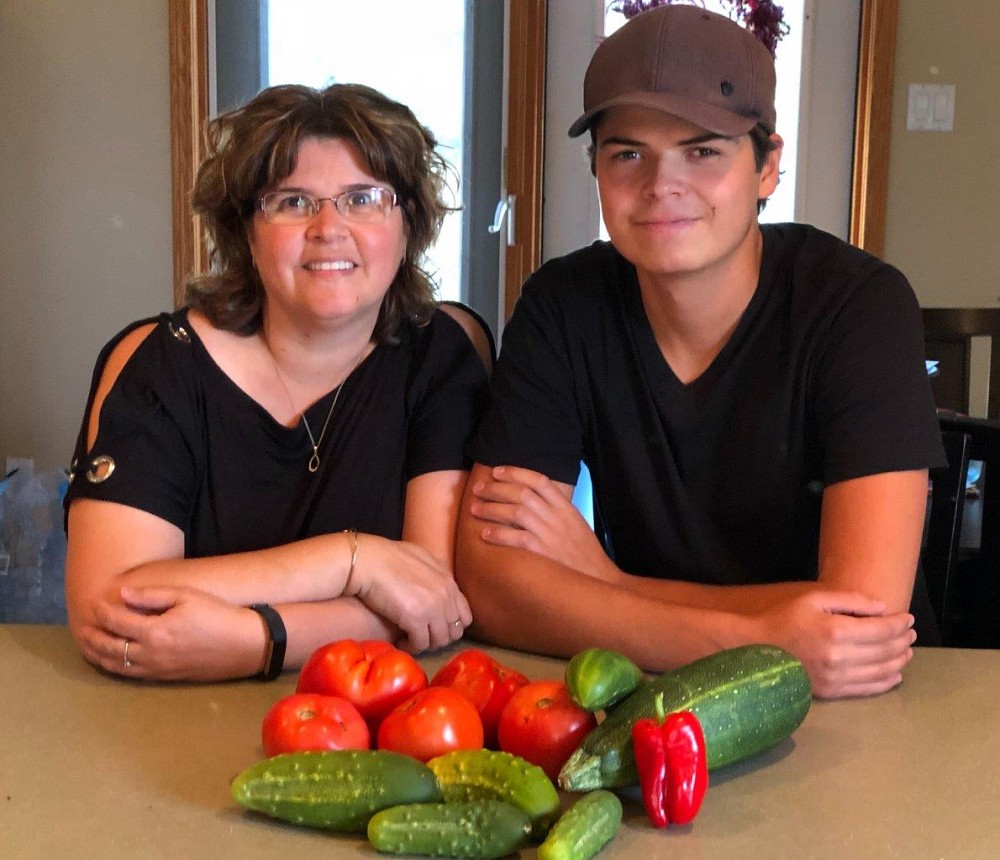Loco for Local
by Vanessa Masters
 Hospital Staff Feature: Carm Morancy, Ward Clerk, Maternal Newborn Services. Gardening is a great way to incorporate vegetables from your own backyard into healthy family dinners. Carm learned firsthand after her son Matthew brought his new hobby home after working a couple summers at Creekside Nursery. The two of them were able to grow a variety of vegetables right outside their back door.
Hospital Staff Feature: Carm Morancy, Ward Clerk, Maternal Newborn Services. Gardening is a great way to incorporate vegetables from your own backyard into healthy family dinners. Carm learned firsthand after her son Matthew brought his new hobby home after working a couple summers at Creekside Nursery. The two of them were able to grow a variety of vegetables right outside their back door.Eating local food is good for your health, tastes great, is kind to the environment, and benefits our local economy. Food that is grown locally is fresher, tastes better and is more nutritious.
Fruits and vegetables at the grocery store are often picked days or weeks prior to when they are ripe so that they makes it to the shelves in time. In contrast, when you buy locally, the produce is picked at prime ripeness. In addition to being and tasting fresher, the shorter the distance from farm to fork means there is less of an environmental impact because of reduced packaging and less greenhouse gas emissions from decreased travel distances. You can also feel great about buying locally knowing that you are supporting farmers in your community and keeping your money in the local economy.
Here are some tips on how to start eating locally more often:
- Visit our Hospital’s Fresh Market that runs every Wednesday from June to October from 11:00 am to 1:00 pm in the Cafeteria Courtyard. Grab some fresh veggies from a number of local vendors.
- Try growing a couple of tomato plants, fresh herbs, or carrots in your backyard. If you have more gardening experience, try for other vegetables and expand your garden to include a variety of produce in all different colours.
- Figure out which regular grocery items can be easily swapped for local versions. For example, local potatoes are comparable in price and are available at many local grocery stores or you can visit a farmers’ market to get to know the people behind the food.
- Shop for items while they are in season! Eating local doesn’t have to be expensive. By looking for items while they are in season you can cut down on costs. And with some items like berries, try freezing them so that you can enjoy them all year long.
- Harvest from nearby areas. Try picking your own food, like blueberries or enjoying some local wild meat.
- Make shopping local a family activity. Check out local farms and vendors at the Thunder Bay Country Market and make it a fun outing for the whole family.
Switching to a completely local diet may seem too daunting or be too unrealistic for some. So, if this seems overwhelming, try the 10% challenge by redirecting 10% of your grocery budget to buy local items. Incorporate some of the tips above to reach your 10%.